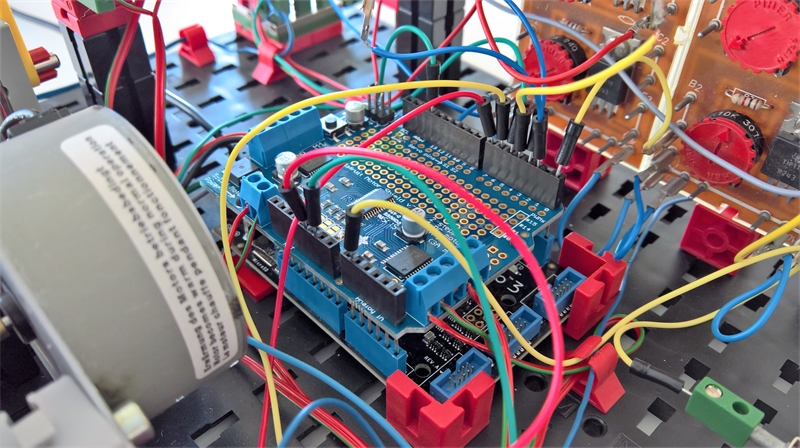Elektronik

Hochgeladen am 8.9.2016, 14:31 von Stefan Falk. 2 / 2
Das interessante an der Sache ist der große Komfort beim Entwickeln: fast vollständiges .net (incl. Objektorientierung, Multithreading, Garbage Collection, Netzwerk, Exception Handling und und und), Visual Studio mit vollem Live-Debugging etc.
Damit kann man der Software eine richtig schöne Architektur geben und softwaretechnisch halt aus dem Vollen schöpfen. Das erkauft man sich mit mehr CPU-Zyklen als z.B. bei in C programmierten Arduinos oder PIs, da im .net Micro Framework der IL-Code zur Laufzeit interpretiert wird. Aber schnell genug für I/O mit ein paar kHz ist es allemal und mir den Komfort auf jeden Fall wert.
Außerdem benutze ich hier Leistungsstufen der 1980er-Jahre-fischertechnik-Elektronik als weitere Treiber (außer denen des Adafruit-Boards), die einfach an normalen I/O-Leitungen des Netduino hängen.
lemkajen (11.9.2016, 10:05:01)
Fantastisch!
Stefan Falk (3.4.2018, 19:55:35)
The interesting point in all this is the great comfort you have developing the software: Nearly full .net, including object orientation, multithreading, garbage collection, networking, exception handling, Visual Studio with the full live debugging experience, etc. etc.
By using all this, the software can be given a nice architecture, and you can use everthing modern software development has to offer. You buy this at the cost of some more CPU cycles as compared to native C programs in Arduinos or PIs, because .net Micro Framework interprets the compled IL byte code at run time. However, things are quite fast enough for I/O with some kHz frequency, and for me, this gained comfort is well worth it.
Additionally, I use the driver boards of the 1980ies fischertechnik electronics as additional drivers (besides that on the Adafruit board). They are attached simply to the digital I/O pins of the Netduino board.